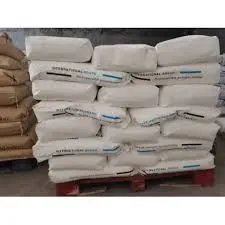
Dec . 12, 2024 14:23 Back to list
hpmc for tile adhesive
HPMC for Tile Adhesive An Essential Component in Modern Construction
Hydroxypropyl Methylcellulose (HPMC) is an essential additive widely used in the construction industry, especially in tile adhesives. This versatile cellulose ether offers several benefits that enhance the performance of tile adhesives, making it a preferred choice among manufacturers and contractors.
What is HPMC?
HPMC is a water-soluble polymer derived from cellulose, a natural polymer found in the cell walls of plants. The modification process adds hydroxypropyl and methyl groups, which improves the solubility and thermal stability of the cellulose. As a result, HPMC can retain its properties in various conditions, making it ideal for construction applications.
Benefits of HPMC in Tile Adhesives
1. Improved Workability One of the primary advantages of adding HPMC to tile adhesives is the enhanced workability it provides. HPMC increases the viscosity of the adhesive mixture, allowing for better application and spreading on surfaces. This makes it easier for tilers to handle the material, ensuring a more even application and reducing wastage.
2. Extended Open Time HPMC improves the open time of tile adhesives, which refers to the period during which the adhesive remains workable after application. Longer open time allows contractors to position tiles without the adhesive setting too quickly. This is particularly beneficial in large projects where tiles must be adjusted to achieve the desired layout and alignment.
hpmc for tile adhesive

3. Water Retention Another critical function of HPMC in tile adhesives is its ability to retain water. HPMC creates a gel-like structure in the adhesive, preventing water from evaporating too quickly during the curing process. This ensures that the adhesive remains moist, allowing for better bonding to the tiles and substrates. Water retention is particularly essential in hot and dry conditions, where rapid evaporation can compromise adhesion quality.
4. Enhanced Adhesion The addition of HPMC enhances the overall bonding strength of tile adhesives. The improved viscosity and water retention contribute to a strong bond between the tiles and the substrate, reducing the risk of tile slippage over time. This feature is crucial in ensuring the longevity and durability of tiled surfaces.
5. Resistance to Cracking and Shrinkage HPMC-modified tile adhesives exhibit reduced cracking and shrinkage during curing. The polymer's flexible nature accommodates slight movements in the substrate, minimizing the risk of cracks that can arise from temperature fluctuations or settling. This resilience is vital for maintaining the integrity of tile installations, especially in high-traffic areas.
6. Compatibility with Various Materials HPMC is compatible with various binders and polymer additives, allowing manufacturers to tailor tile adhesive formulations to specific project requirements. This versatility means HPMC can be used in cement-based, gypsum-based, and other adhesive systems, making it suitable for various applications.
Conclusion
In conclusion, HPMC is a critical ingredient in modern tile adhesives, contributing to their effectiveness and performance in construction projects. The benefits of improved workability, extended open time, enhanced adhesion, and resistance to cracking make it a valuable additive for both manufacturers and contractors. As the construction industry continues to evolve, the demand for high-performance materials like HPMC will undoubtedly rise, ensuring its position as a staple in the formulation of tile adhesives. For anyone involved in tile installation, understanding the role of HPMC could lead to better results and a more efficient workflow.
-
Versatile Hpmc Uses in Different Industries
NewsJun.19,2025
-
Redispersible Powder's Role in Enhancing Durability of Construction Products
NewsJun.19,2025
-
Hydroxyethyl Cellulose Applications Driving Green Industrial Processes
NewsJun.19,2025
-
Exploring Different Redispersible Polymer Powder
NewsJun.19,2025
-
Choosing the Right Mortar Bonding Agent
NewsJun.19,2025
-
Applications and Significance of China Hpmc in Modern Industries
NewsJun.19,2025







